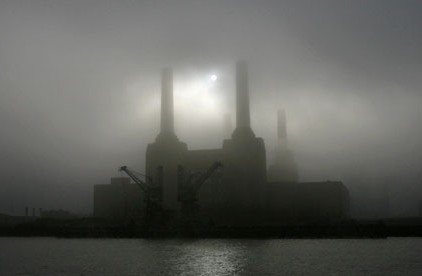
By Heather Zanoni
A climate risk assessment (Mehrotra et al., 2009) demonstrates that the most immediate impact of climate change on London’s energy sector will occur due to higher temperatures caused by the urban heat island effect as well as increased heat waves. Rising temperatures will lead to growing demands on the power supply, especially due to peak cooling loads during high temperatures, which will increase the likelihood of outages (Greater London Authority, 2006). Most research to date has focused on electricity energy demands, but it is expected that other energy use will be affected as well, including cooking, water heating, and process energy requirements, (Hammer et al., 2011). In addition, London faces risk from both surface and fluvial flooding that could affect the performance of energy plants or the distribution network, depending on the location and design of both. In general, the whole supply chain could be affected if equipment does not operate optimally in changing climates, and the availability of fossil fuels used to create power changes (Hammer et al., 2011).
Current mitigation and adaptation efforts: The London Plan has been London’s comprehensive planning document since its development in 2004. The current version from July 2011 discusses the Greater London Authority’s dedication to sustainable development. Mitigation efforts in the plan include a commitment to carbon emissions reduction of 60% by 2025 (Greater London Authority, 2011b). Goals include both using less energy and using energy more efficiently. A major focus of the plan is on sustainable design and construction, and improved building codes. Adaptation efforts include decentralized energy and renewable energy sources. Specifically, on-site renewable energy can cover the remaining demand after reducing energy use where feasible (Greater London Authority, 2011b). Waste to energy facilities are especially recommended to boroughs.
Recommendations: The London Plan is addressing energy sector mitigation and adaptation efforts, yet there is some room for improvement. The Mayor’s office should develop specific, achievable objectives for each policy recommendation based on data. For instance, individual residences and small business owners will have trouble mitigating their emissions if they don’t have guidance in how to do so. Firms not currently partnered with the Greater London Authority, who occupy an existing building, will not know that switching to LED lights is one of the easiest energy-efficient transitions that is also cost effective. Concrete examples of how to achieve results, resources to provide assistance, and clear accountability should all be outlined in the next version of the document. Consequences for not complying need to also be included, and they must equal the negative outcomes of not meeting objectives as a result of non-compliance. Also, a clear process to track results should be available to the public, policymakers, and planners. More continuous research and development needs to assess how the energy sector will be affected by climate change, as it evolves. London needs to accurately assess and adapt as time goes on, paying special attention to vulnerable assets and populations (Greater London Authority, 2011b). In addition, many of London’s power plants need to be replaced by emerging technologies or efficiently rehabilitated to satisfy demand (Greater London Authority, 2011a). Finally, London should further integrate their planning strategies across sectors to ensure that plans are cohesive and inclusive, and for instance, new, efficient building codes are not contributing to the lack of affordable housing in the city.
References
Greater London Authority. (2006). London’s urban heat island: A summary for decision makers. London, U.K.: Greater London Authority. http://www.london.gov.uk/mayor/environment/climate_change/
Greater London Authority. (2011a). Climate Change Mitigation and Energy Strategy. http://www.london.gov.uk/priorities/environment/climate-change/climate-change-mitigation-strategy
Greater London Authority. (2011b). The London Plan 2011 Spacial Development Strategy For Greater London. Retrieved from http://www.london.gov.uk/priorities/planning/londonplan
Hammer, ‚ÄÇS.‚ÄÇA.,‚ÄÇKeirstead, J.,‚ÄÇDhakal, S., ‚ÄÇMitchell, J.,‚ÄÇColley, M.,‚ÄÇConnell,‚ÄÇR.,‚ÄÇGonzalez,‚ÄÇR., Herve-Mignucci,‚ÄÇM., Parshall,‚ÄÇL., Schulz, N.,‚ÄÇ& Hyams, M. (2011). Climate‚ÄÇchange‚ÄÇand‚ÄÇurban‚ÄÇenergy‚ÄÇsystems. In‚ÄÇ C.‚ÄÇRosenzweig,‚ÄÇW.‚ÄÇD.‚ÄÇSolecki,‚ÄÇS.‚ÄÇA.‚ÄÇHammer,‚ÄÇS.‚ÄÇMehrotra‚ÄÇ(Eds.),‚ÄÇClimate change and cities: First assessment report of the Urban Climate Change Research Network (pp. 85-111).‚ÄÇ Cambridge: Cambridge‚ÄÇUniversity‚ÄÇPress.
Mehrotra, S., C.E. Natenzon, A. Omojola, R. Folorunsho, J. Gilbride & C. Rosenzweig. (2009). Framework for city climate risk assessment. Washington, DC: World Bank.
This article is a product of Professor Shagun Mehrotra’s Climate Change and Cities class. Views expressed are entirely those of the individual author.